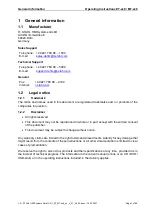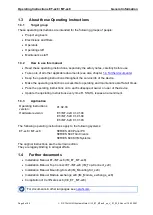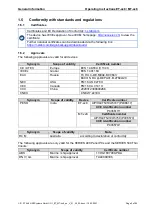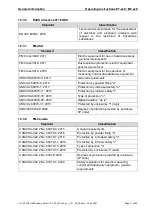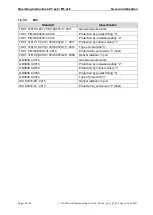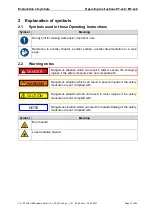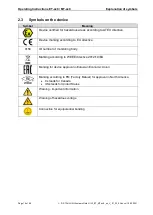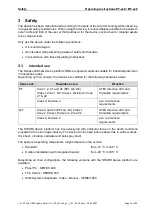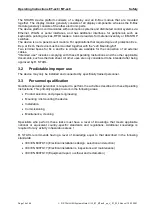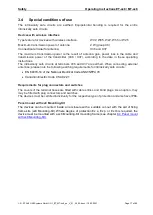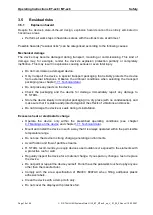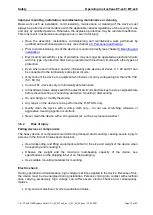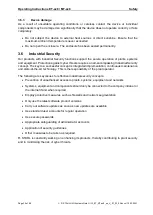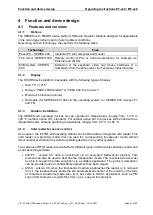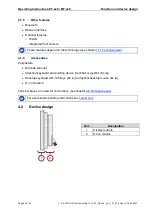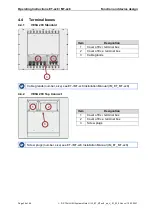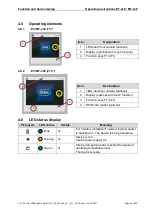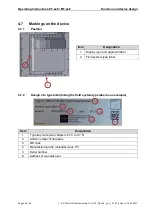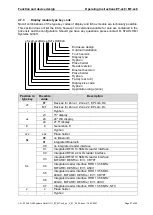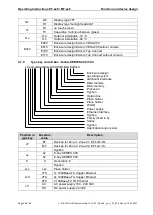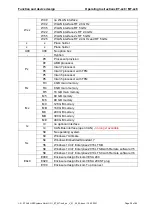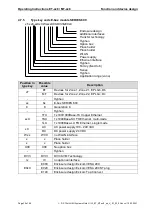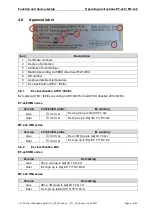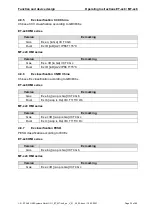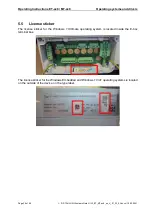
Function and device design
Operating Instructions ET-xx8 / MT-xx8
R. STAHL HMI Systems GmbH / OI_ET_MT-xx8_en_V_01_02_03.docx / 10.03.2021
Page 21 of 84
4
Function and device design
4.1
Features and versions
4.1.1
Options
The SERIES xx8 - SHARK device platform HMIs are Operator Stations designed for applications
in the oil and gas industry and in harsh ambient conditions.
Depending on their technology, they perform the following tasks:
Technology
Task
Panel PC - SERIES 400
Industrial PC with computer and monitor
Thin Client - SERIES 500
Remote control of PCs or virtual workstations, for example via
Ethernet and WLAN.
KVM System - SERIES
600
Extension of the keyboard, video and mouse interfaces of a
workstation from the safe area to the hazardous industrial area.
4.1.2
Display
The SHARK device platform is available with the following types of display:
Size: 15" or 21.5"
Design: "VESA 200 Standard" or "VESA 200 Top Connect"
Multi-touch function (optional)
Dimmable (for SERIES 400 / 500 via the operating system, for SERIES 600 via keys F7
and F8)
4.1.3
Outdoor Installation
The SERIES xx8 operating devices can be operated in temperatures ranging from -10 °C to
+65 °C (outdoor option O0 - standard). For outdoor option O4, the devices will be fitted with an
integrated heater, allowing operating temperatures ranging from -40 °C to +65 °C.
4.1.4
Card reader for access control
As an option, the ET-/MT-x98 operating stations can be fitted with an integrated card reader. This
card reader is a proximity reader that can read the corresponding transponder media without
direct contact and transfer the data to operating devices or any other systems.
Two versions of RFID reader are available for different types of data transfer between reader and
a corresponding software.
CRYPT - version C5: data is transferred via an encrypted bidirectional protocol. This
protocol can also be used to describe the transponder media. The connected device must
be able to support the data encryption via a suitable application. The protocol description
can be provided once a confidentiality agreement has been signed.
ASCII - version C6: when the transponder medium approaches the reader or is removed
from it, the reader actively sends the pre-parameterised content of the medium in the form
of characters transformed byte-wise from hex code to ASCII. Applications such as PM
Logon from Siemens or LogOnPlus from i.p.a.s. support this protocol.

